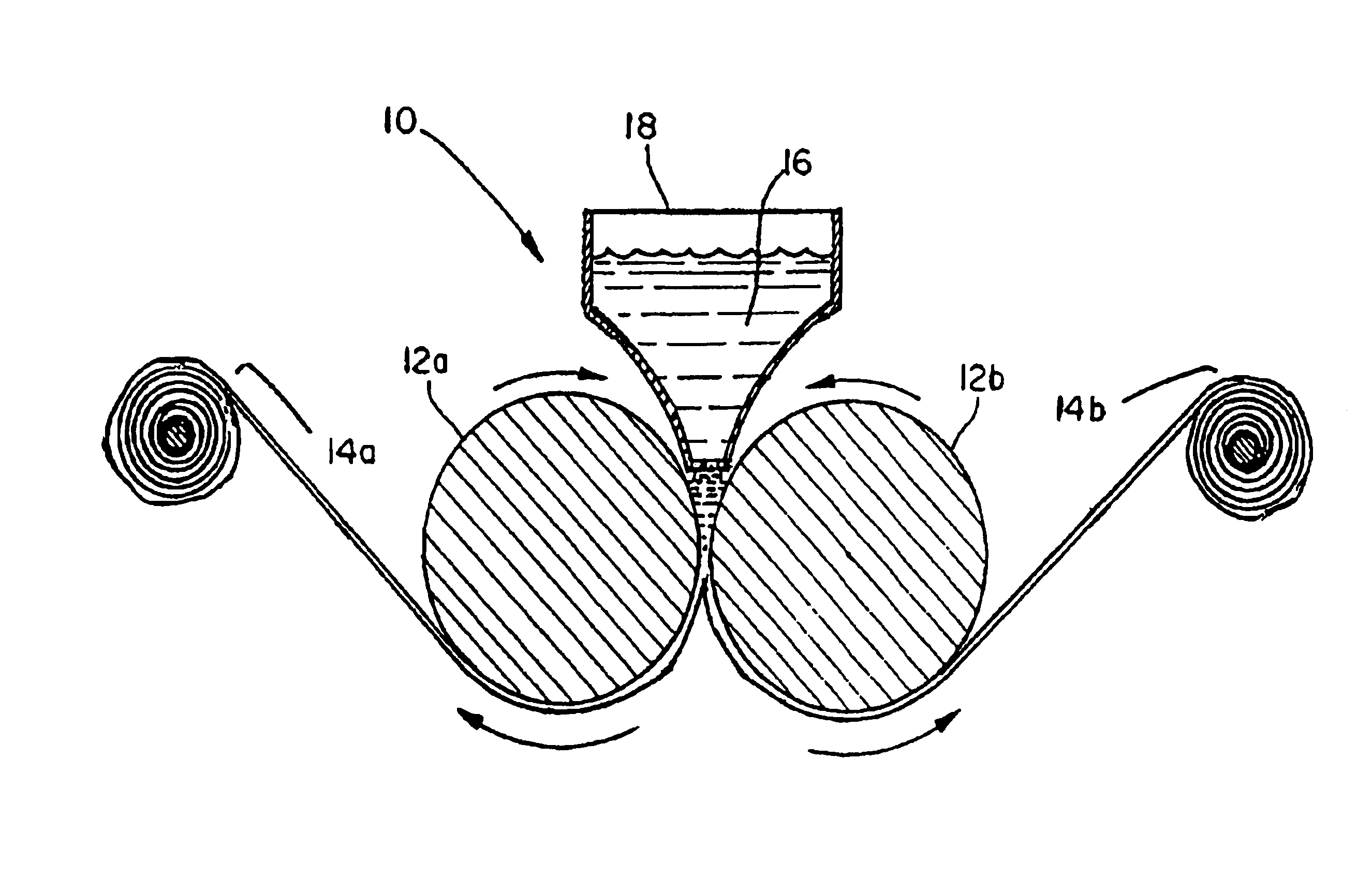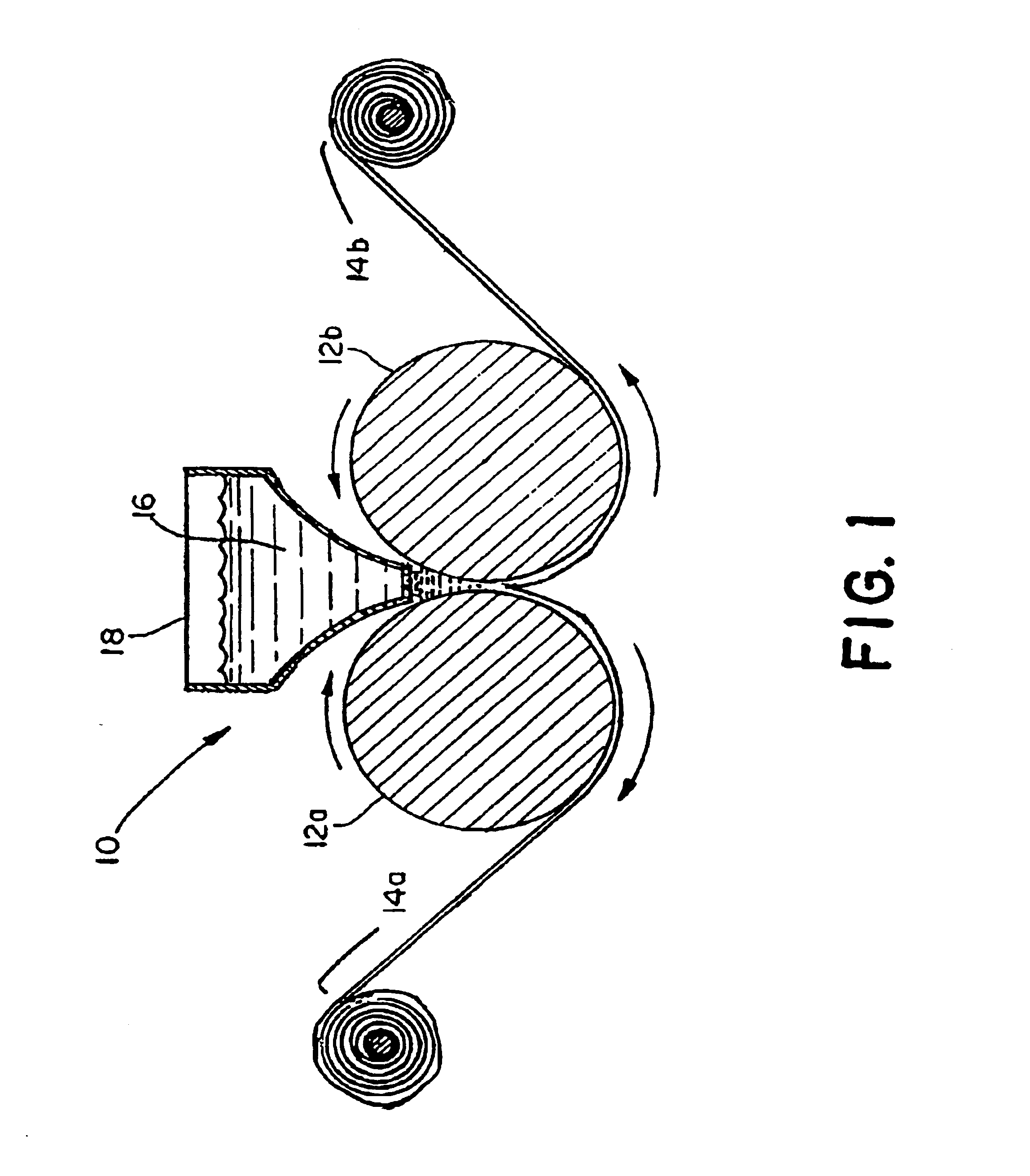Method of producing edible cellulosic films
a cellulosic film and edible technology, applied in the field of edible cellulosic film production, can solve the problems of low organoleptic acceptance, low organoleptic acceptance of products, and inconsideration of conventional paper and paper related products
- Summary
- Abstract
- Description
- Claims
- Application Information
AI Technical Summary
Benefits of technology
Problems solved by technology
Method used
Image
Examples
example 1
[0026]A cellulosic gel containing 4.9% w / w refined cellulose derived from wheat straw was produced according to the method described in U.S. Pat. No. 5,487,419, the entire disclosure of which is incorporated by reference herein. The formula for the gel is found in Table 1.
[0027]
TABLE 1Wheat Straw Cellulose590lb.Glycerin90lb.Propylene Glycol60lb.CMC High Viscosity80lb.CMC Low Viscosity80lb.Sorbic Acid2lbWater11190lb.
[0028]The sodium carboxymethylcellulose (CMC) products employed were obtained from Diachi Chemical Company, Ltd., Japan and are identified as. type HP 5HS (high viscosity) and type HP 8A. (low viscosity). The company specifications and Code of Federal Regulations (CFR-21) regarding food grade CMC are incorporated by reference. Wheat straw cellulose is a proprietary product manufactured by Watson Foods Company, Incorporated, Connecticut and is a chemically delignified, bleached form of alpha cellulose. Glycerin, propylene glycol and sorbic acid are food grade ingredients c...
PUM
| Property | Measurement | Unit |
|---|---|---|
| length | aaaaa | aaaaa |
| length | aaaaa | aaaaa |
| temperature | aaaaa | aaaaa |
Abstract
Description
Claims
Application Information
 Login to View More
Login to View More - R&D
- Intellectual Property
- Life Sciences
- Materials
- Tech Scout
- Unparalleled Data Quality
- Higher Quality Content
- 60% Fewer Hallucinations
Browse by: Latest US Patents, China's latest patents, Technical Efficacy Thesaurus, Application Domain, Technology Topic, Popular Technical Reports.
© 2025 PatSnap. All rights reserved.Legal|Privacy policy|Modern Slavery Act Transparency Statement|Sitemap|About US| Contact US: help@patsnap.com


